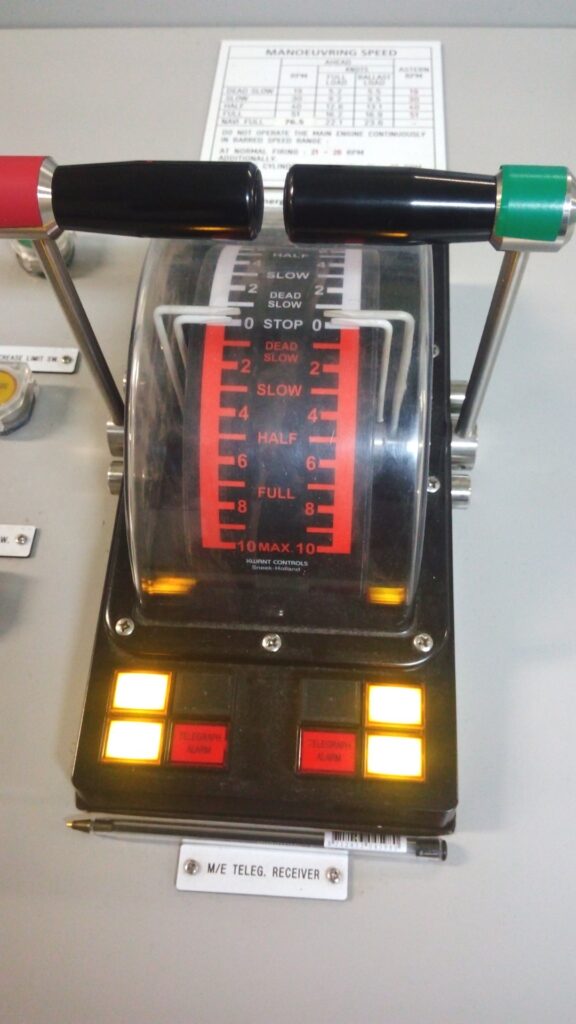Barred Speed Range: What It Is and How to Avoid It. If you are a ship operator, you may have heard of the term “barred speed range” or “critical speed range”. This is a range of engine rotational speed that can cause excessive torsional vibration and torque in the shaft system, leading to possible damage or failure of the shaft, couplings, gears, propellers, and other components. In this blog post, we will explain what barred speed range is, how it occurs, how to identify it, and how to avoid it.
What is barred speed range?
Barred speed range is the range of engine rotational speed where the natural frequency of the shaft system matches or is close to the operating frequency of the engine. This can result in resonance, which is a phenomenon where the amplitude of vibration increases significantly due to constructive interference of the waves. Resonance can cause high stresses and strains in the shaft system, exceeding the design limits and causing fatigue, cracking, or breaking of the components.
How does barred speed range occur?
Barred speed range occurs when the engine rotational speed changes, such as during acceleration or deceleration. As the engine speed changes, so does the operating frequency of the engine, which is determined by the number of cylinders and the firing order. The natural frequency of the shaft system, on the other hand, depends on the mass, stiffness, and damping of the shaft and its components. The natural frequency can also change due to temperature, load, wear, or damage.
When the operating frequency and the natural frequency coincide or are close enough, resonance occurs and torsional vibration and torque increase dramatically. This can happen at one or more speed ranges, depending on the characteristics of the shaft system and the engine.

How to identify this range?
Barred speed range can be identified by several methods, such as:
– Calculation: Using mass-elastic data and computer programs, torsional vibration analysis (TVA) can be performed to calculate the natural frequencies, mode shapes, interference diagram, and forced response of the shaft system. This can help determine the potential barred speed ranges and their severity.
– Measurement: Using torque sensors and telemetry systems, torsional vibration testing (TVT) can be performed to measure the actual torsional vibration and torque of the shaft system at different engine speeds. This can help verify the results of TVA and detect any deviations or anomalies.
– Observation: Using visual inspection and vibration monitoring systems, signs of excessive torsional vibration and torque can be observed at different engine speeds. These signs may include increased noise, vibration, temperature, wear, or damage of the shaft components.
How to avoid barred speed range?
Barred speed range can be avoided by several methods, such as:
– Design: Using proper design criteria and standards, such as American Petroleum Institute (API), shaft systems can be designed to minimize torsional vibration and torque and avoid resonance at normal operating speeds. This may involve selecting appropriate materials, dimensions, couplings, dampers, flywheels, propellers, etc.
– Operation: Using proper operating procedures and guidelines, ship operators can avoid running the engine at barred speed ranges or pass through them as quickly as possible. This may involve using telegraph controllers or manual controls to adjust the engine speed smoothly and rapidly.
– Maintenance: Using proper maintenance practices and schedules, shaft systems can be inspected, repaired, or replaced regularly to ensure their optimal performance and condition. This may involve checking for alignment, balance, lubrication, wear, damage, etc.
What is critical speed in reference to marine diesel engines?
Critical speed is a term that refers to the rotational speed of a marine diesel engine that matches its natural vibration frequency. When this happens, the engine can experience damaging vibration and has to be maneuvered through as quickly as possible. This is also known as the barred speed range.
Critical speed is more likely to occur in low-speed diesel engines that operate at various different speeds for prolonged periods. These engines usually have a rotating balancer that cancels out the vibration produced by the engine. Medium-speed and high-speed diesel engines are less prone to critical speed because they have a more symmetrical design and a higher rotational speed.
Critical speed is an important factor to consider when designing and operating marine diesel engines, as it can affect the performance, reliability and safety of the engine and the vessel.
Conclusion
Barred speed range is a serious issue that can affect the safety and efficiency of ship operations. By understanding what it is, how it occurs, how to identify it, and how to avoid it, ship operators can prevent costly and catastrophic failures of their shaft systems.




Hello, thanks a lot for your detailed and clear explanation about BSR. But here is a little confusing thing for me.
In the forward part of this article, BSR is performed on the shaft system. While the critical speed’s influence ,in the final part of the article, focuses on the marine diesel engine. However, these two terms have the same meaning. So does this mean the resonance damage happens both on the shaft system and the engine itself? Or maybe I have some misunderstanding points?
Sincerely looking forward for your reply and thanks for your precious time!